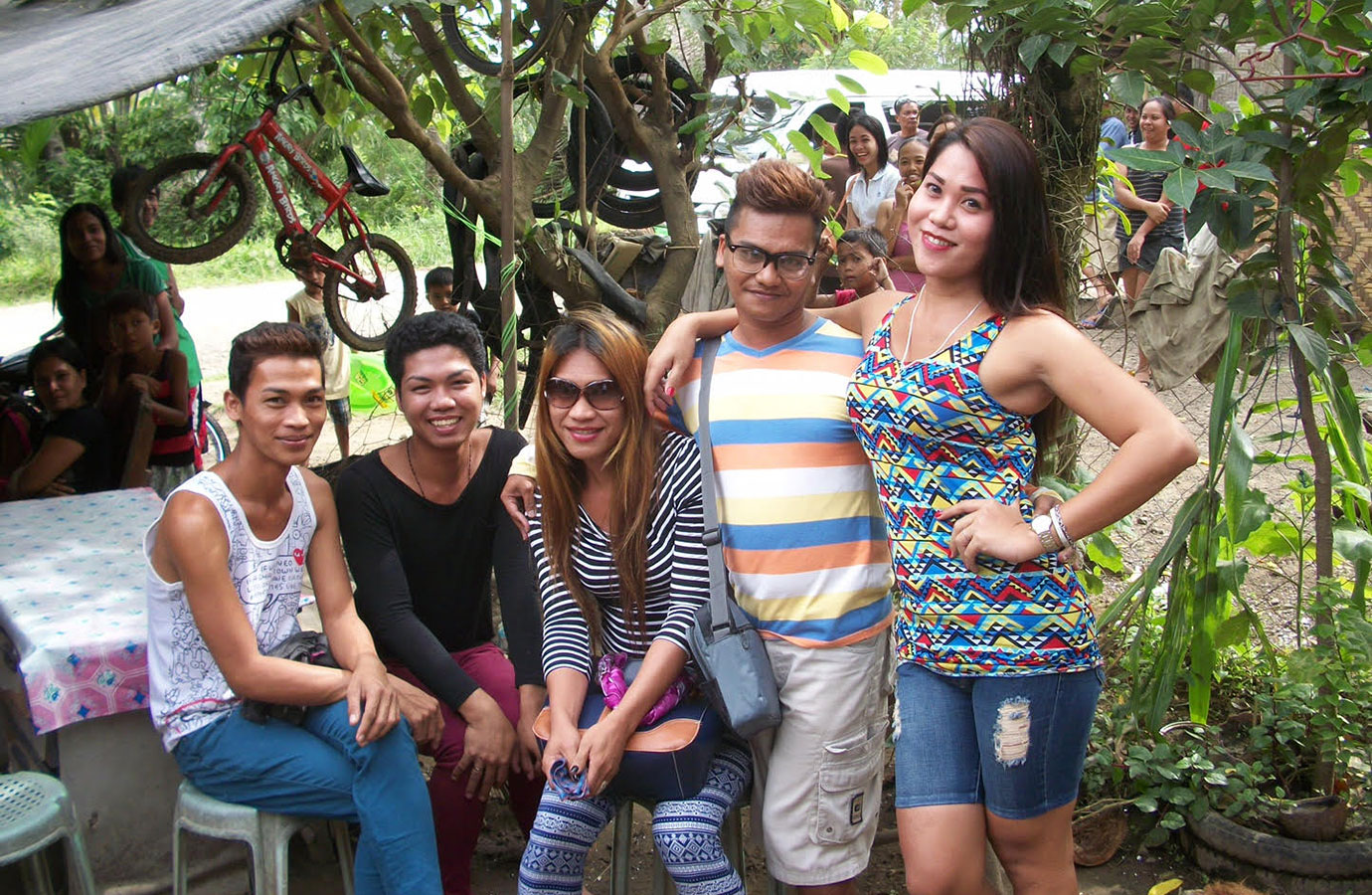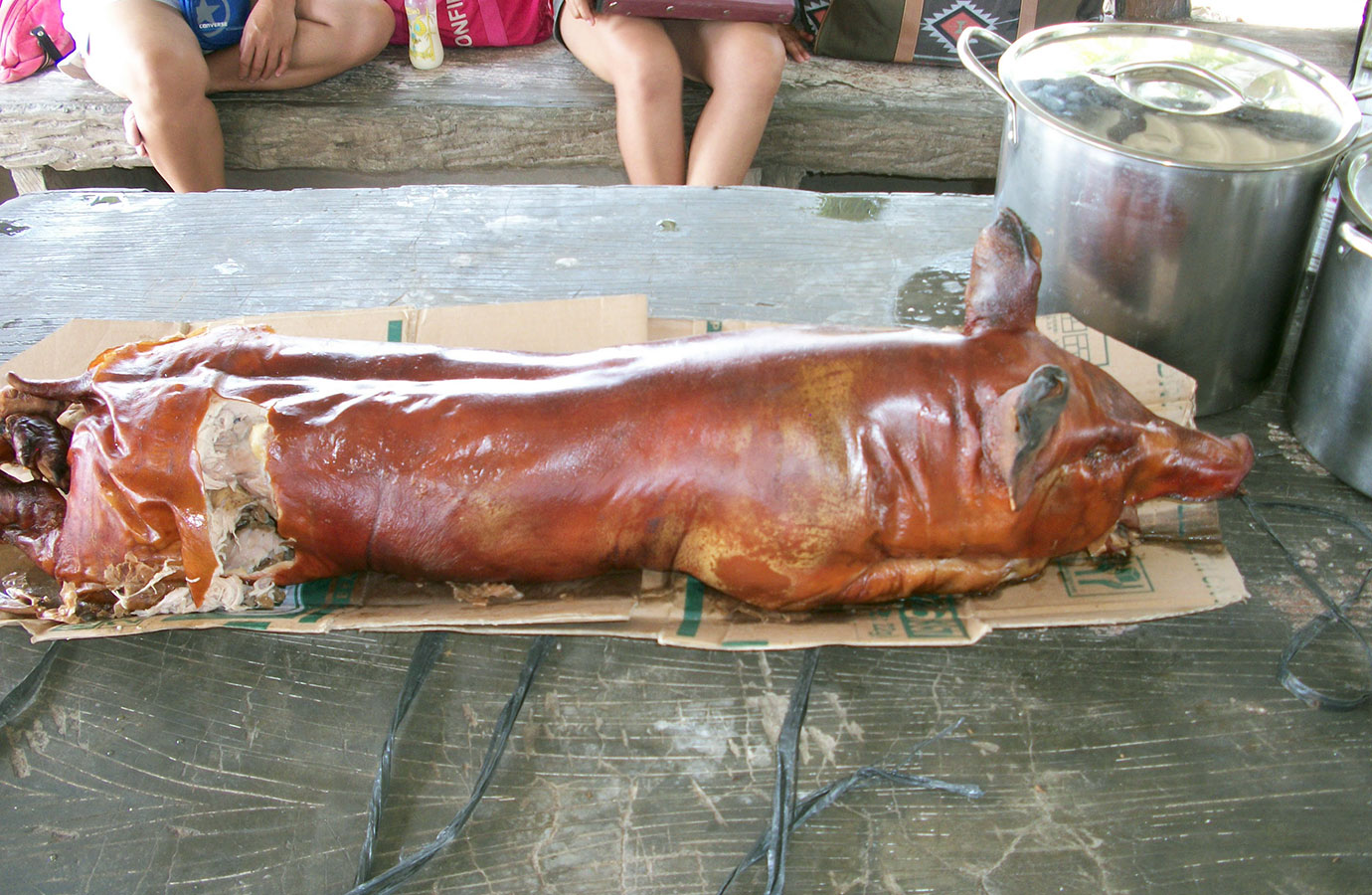By Wrenn Nelson
First impressions of the Philippines: it’s hot and humid, but no more than August in Chicago. And there are a lot of people—lots and lots of people. Clouie is waiting for me at the airport in Davao looking fresh and lovely, in sharp contrast to how I feel after 25 hours in transit with two stopovers, all in steerage.
Cab to the hotel. No expressway here so it’s all city streets. Much more interesting and educational. Buildings of all sorts and ages shoved up against each other. The first impressions are all a bit surreal in my travel-induced fog, as is the girl sitting next to me holding my hand, but it all feels like the beginning of a great Asian adventure.
Davao is the commercial capital of Mindanao island, and that pretty much covers its historical and cultural attractions as well. By the time the Spanish got around to building anything here in the mid-19th century, their colonial impulse towards grandeur had pretty much run out. The cathedral is a rather plain building that was remodeled in the mid-20th century into some kind of precast, concrete, Euro-tech vision of a gray whale rolling on its side. Other charming colonial architecture is missing too. No town square with handsome municipal buildings can be found. By all appearances, the place sprang to life in a flurry of concrete block. There are countless little shops and food stalls, 10 by 15 feet wide, repairing tires or selling motorcycle parts, doing every imaginable kind of business on the smallest possible scale, including selling cooked pork and chicken in all imaginable forms.
One of the things that my new love and I had talked about was spending a day at a beach resort, another was my meeting her friends and family. Somehow these got rolled into one event with the addition of a roast pig.
There, Clouie and I were, at 7AM in a hired minibus heading to pick up her friends and family. Every conceivable kind of motorized vehicle shared the same roadway. There were bicycles and motorcycles—lots of motorcycles—fitted with sidecars so they could carry six or more passengers at a time. There were cars, buses, trucks, and one Luddite with his water buffalo hitched to a cart. All these conveyances were loaded to overflowing with people and freight, but mostly people—so many people. I have been in all kinds of traffic jams, from Boston to Mexico City, Rome to Calcutta, but never have I seen a stream of traffic that was as quiet, polite, and civilized as in the Philippines.
As we head to Tagum City where Clouie lives, the four lanes turn to two, then to a dirt road through a banana plantation. Finally, we pull up to a little cluster of three houses built on a 25 foot encroachment on the banana field. The house is the size of a two-car garage and is a testimony to what can be accomplished with scrap lumber and corrugated steel.
As we pull up and get out of the van there are 30 people in the yard under a shelter, sitting or standing. Every one of them is staring at me, giggling. I smile back, extend my hand, and wish that I could somehow be less large, less white, and less “other” than I am.

I get the guided tour of the house and then it’s time to load up and head for the beach. And load we do as my new girlfriend and eleven of my newest and closest friends along with four children all get into the six passenger van. Off we go in a cloud of dust between the rows of banana trees, finally back on a sort of main, paved road then onward to Jinio’s Beach Resort.
We make a stop on the way for beer, for what is a picnic without beer? We pick up five cases of quarts of beer. For those of you not old enough to remember that form of packaging, ask grandpa and he can confirm that we are talking about 15 gallons of beer. Without fuss or complaint, we find places to stow the beer among the adults, children, and other miscellaneous items in the little van.
OK, beach resort is a slight misnomer. There is no beach but there are concrete steps leading down to the water that is a fairly murky shade of brown, my arrival having coincided with Typhoon Hanna, which riled up the Philippine sea. There are small open-sided shelters with tables in the center and benches on three sides. There is a karaoke machine, not just any karaoke machine, but the Big Daddy of them all, with multiple turbocharged, stadium-sized speakers.

Then the pig arrives by motorcycle along with side dishes of adobo, papaitan, and kare kare, plates, cutlery, and soda pop. Adobo is the ubiquitous pork or chicken stew of the Philippines. Like curry, it is a cooking method rather than a specific spice or recipe. Every household has its own version that is handed down with the same reverence we reserve for Grandma’s biscuit recipe. Fundamentally, it is meat slow cooked in vinegar, soy sauce, and spices. Bay leaves, black pepper, and sometimes hot peppers are added. It can range from very mild to rather spicy. Papaitan is a tripe soup made from either beef or goat innards. It is rather bitter and is an acquired taste even for those who are not immediately put off by the idea of intestines.
Kare kare is an oxtail stew with vegetables. Pork hocks can be used instead and green beans are a common addition, although most any kind of vegetable can show up in the dish. I didn’t see any beef cattle there, so I suspect that the oxtail might be from a water buffalo that has reached the end of its working life. The dish is seasoned with ground peanuts, onion, and garlic, and it is absolutely delicious.
With the exception of the oxtail, all the food I ate in the Philippines was either pork, chicken or seafood. I am sure there are lamb chops and beef available in upscale restaurants which cater to Western tastes but neither is a part of the traditional larder. I did pass a yard where a dozen turkeys were being fattened up, possibly for some American expat Thanksgiving dinner. Thankfully, tofu has yet to make an appearance.
By now, I had been informed multiple times that Philippine lechon, with its golden, crispy skin and tender moist meat is the sine qua non of all pig dishes and it lived up to its billing. Well seasoned, stuffed with lemon grass, and roasted on a stake over a pit of charcoal, it was delightful.
Our singers took a break to eat but were shortly back in full voice, fueled by the seemingly never-ending supply of beer. By the time the beach resort closed at 6 pm, the beer was gone, the pig was only a memory, and I was exhausted. Our happy clan repacked ourselves and the returnable beer bottles into the van and headed home.
Wrenn Nelson is a lifelong Chicagoan who is preparing to move to the Philippines in pursuit of love and lechon. He looks forward to occasionally contributing essays to the Cook’s Gazette about food in Davao and the Philippines in general.

